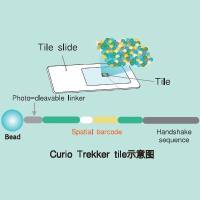Replication Initiation Point Mapping: Approach and Implications
互联网
557
Duplication of eukaryotic chromosomes begins from multiple sites called origins of replication, with DNA synthesis proceeding bidirectionally away from the origin. There is little detailed information available pertaining to whether replication initiates at specific sites or anywhere within a given origin. The development of replication initiation point (RIP) mapping has made it possible to map start sites for DNA synthesis at the nucleotide level. The key step in RIP mapping is the purification of nascent DNA, which is initiated by small RNA primers. For the removal of broken DNA fragments, we utilize λ-exonuclease, which digests DNA, but leaves nascent strands intact as long as they have the RNA primer still attached. RIP mapping is a sensitive technique and has been successfully applied to single copy loci in both budding and fission yeast, archaebacteria, and human cells. Studies in yeast have shown that the binding site for the initiator, the origin recognition complex (ORC), lies immediately adjacent to the replication start point, which suggests that ORC directs the initiation machinery to a distinct site. Here, we present a detailed step-by-step protocol for RIP mapping of replication origins in budding yeast.








